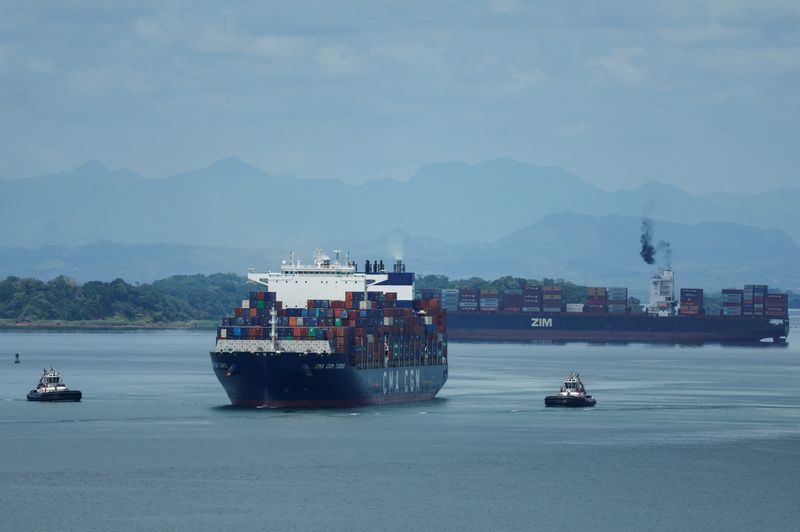By Elida Moreno and Marianna Parraga
PANAMA CITY (Reuters) – Panama Canal profits rose about 9.5% to $3.45 billion in the fiscal year ended in September, despite a severe drought that reduced the number of ships passing through the waterway, the authority said Friday.
The third driest year in the canal’s history left less water available for exploitation, forcing the authority to reduce the number of ships allowed to pass per day between late 2023 and early 2024, while limiting the maximum allowable draft.
The restrictions, which caused major delays for some ships and forced others to seek alternative routes, were lifted later this year after rainfall replenished the country’s water reservoirs.
The waterway handled 423 million tons of cargo through its locks and saw an average of 27.3 ships pass through each day, compared to about 36 the previous year. But a 5% reduction in operating costs helped mitigate the financial impact of the drought.
Revenues rose by $18 million to $4.99 billion, the authority’s vice president of finance, Victor Vial, told reporters, citing preliminary figures.
The canal, which often doesn’t fill the 36 passages a day it now provides, provides an incentive for some ships to return, including bulk carriers and liquefied tankers, while $8.5 billion in projects are planned over the next seven years promoted, including new infrastructure.
“Transits are slowly recovering,” Vial said.

A new long-term reservation system will allow shippers to participate in auctions to secure slots up to a year before passage. Other measures include conservation strategies that reduced water use by 12% for each passage in the fiscal year.
Panama is pursuing a $1.6 billion project to dam the Rio Indio River as a long-term solution to dealing with extreme weather events. Construction of the new reservoir is expected to require the relocation of hundreds of families living near the canal area.


